Ian Brady: The killer who showed no remorse
- Published
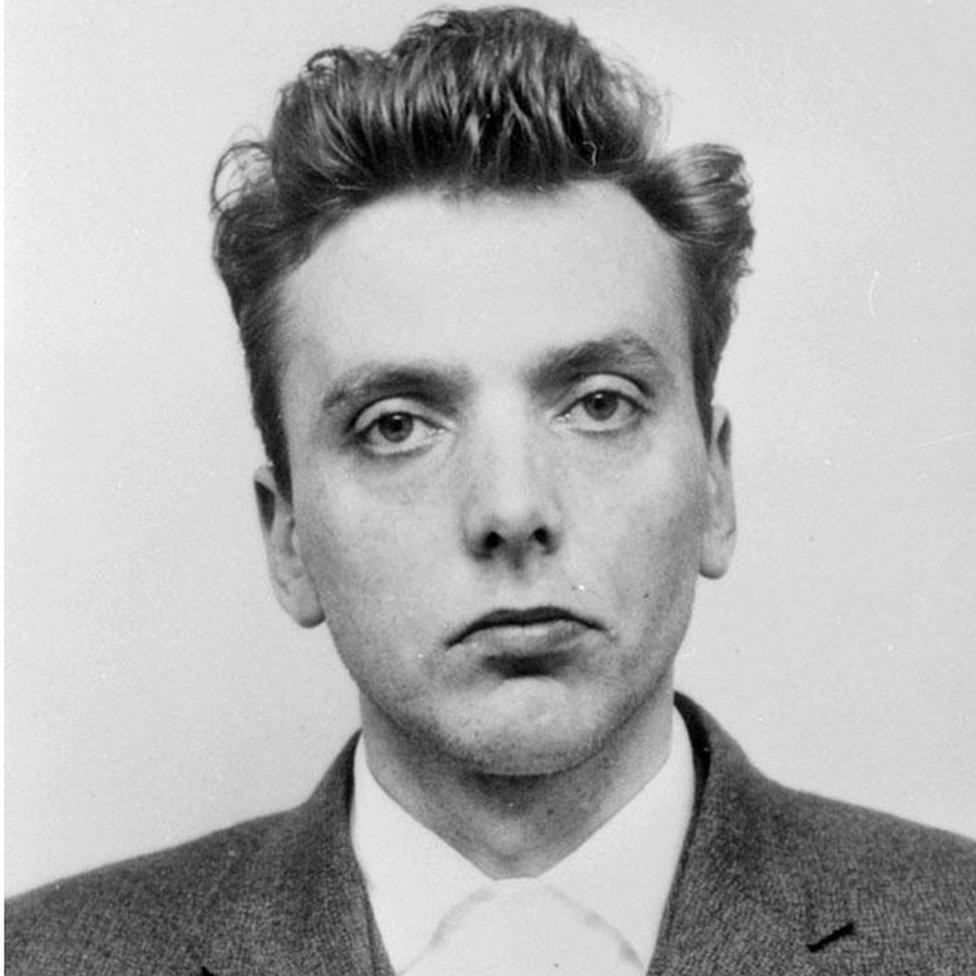
Few killers achieved the notoriety or attracted as much public loathing as the so-called "Moors Murderer", Ian Brady, who has died at the age of 79.
Over a period of 18 months in the 1960s, Brady and his accomplice, Myra Hindley, kidnapped and murdered five children in north-west England.
The bodies of three of their victims were later found buried on Saddleworth Moor near the town of Oldham.
The details of the crime shocked the nation, not least because Brady's accomplice was a woman, and also because of the complete lack of remorse either showed during the subsequent trial.
Brady was born Ian Stewart on 2 January 1938, the illegitimate son of a Scottish waitress.
His violent personality was shaped by an unstable background. His mother neglected him and he was raised by foster parents in the Gorbals, Glasgow's toughest slum.
After a spree of petty crime as a teenager the courts sent him to Manchester to live with his mother and her new husband, Patrick Brady.
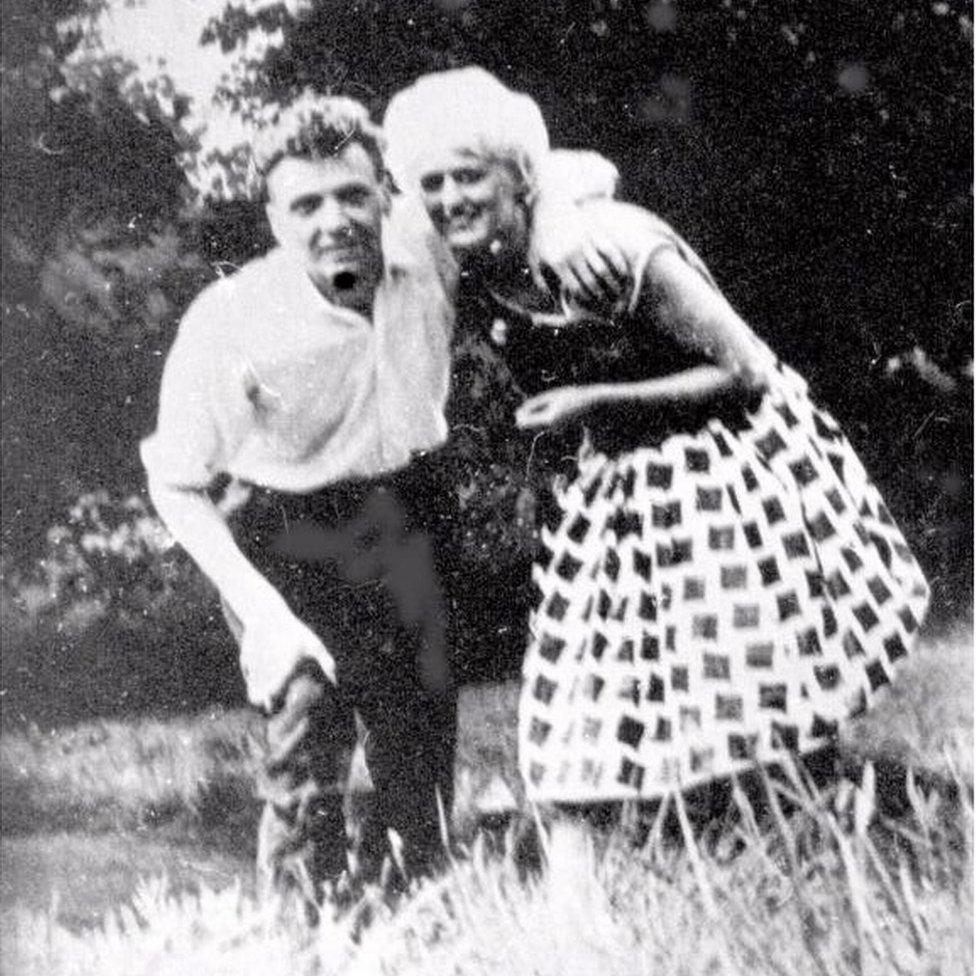
Brady met Myra Hindley at a company where they both worked
He assumed his stepfather's name, continued his criminal activities and developed into a fully-fledged teenage alcoholic.
By now he had acquired new interests, building up a library of books on Nazi Germany, sadism and sexual perversion.
He first met Hindley when she worked as a secretary at the company where they were both employed.
For Hindley it was love at first sight. Brady impressed her by reading Adolf Hitler's Mein Kampf in the original German.
Demonstration
As their relationship developed, they began taking obscene photographs of each other before turning their attention to kidnapping, child molestation and murder.
Between July 1963 and December 1964, 16-year-old Pauline Reade, 12-year-old John Kilbride and Keith Bennett, also 12, were reported missing, all in the Manchester area.
Another victim - Lesley Ann Downey, 10 - disappeared on 26 December 1964.
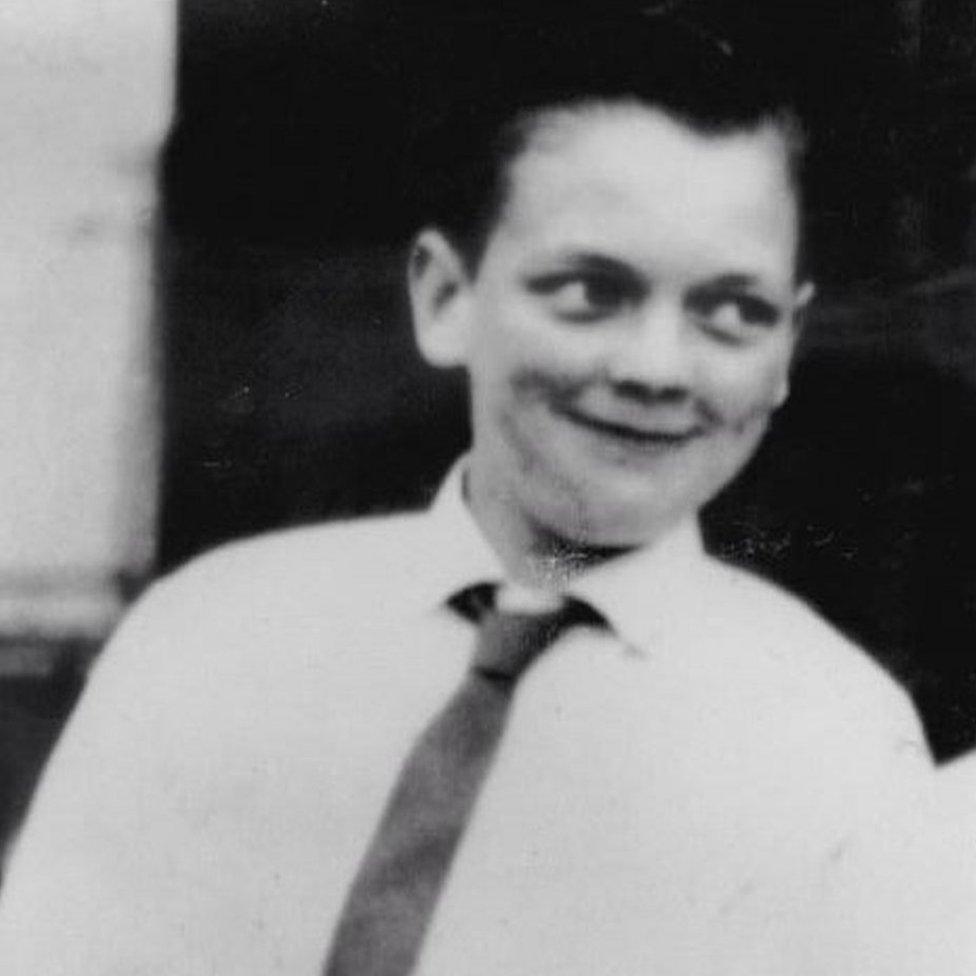
John Kilbride was the second child to disappear
Authorities were baffled by what they referred to as the "unrelated" cases, and were left without a single piece of solid evidence.
In the meantime, Brady and Hindley were intent on a campaign to corrupt Hindley's brother-in-law, David Smith, and recruit him into their circle.
A petty criminal with convictions of his own, Smith was amused when the conversation turned to murder; he questioned Brady's ability to follow it through.
On 6 October 1965, Brady offered a practical demonstration with Edward Evans, 17, striking him 14 times with a hatchet before strangling him.
Suitcases
Horrified, Smith phoned the police the next morning, directing them to Brady's address.
The officers caught Brady and Hindley at home, retrieving a fresh corpse from the bedroom, along with the bloody hatchet and Brady's library of volumes on perversion and sadism.
A 12-year-old neighbour recalled several trips she had made with the couple to Saddleworth Moor, and the police launched a search which uncovered the body of Leslie Ann Downey on 16 October.
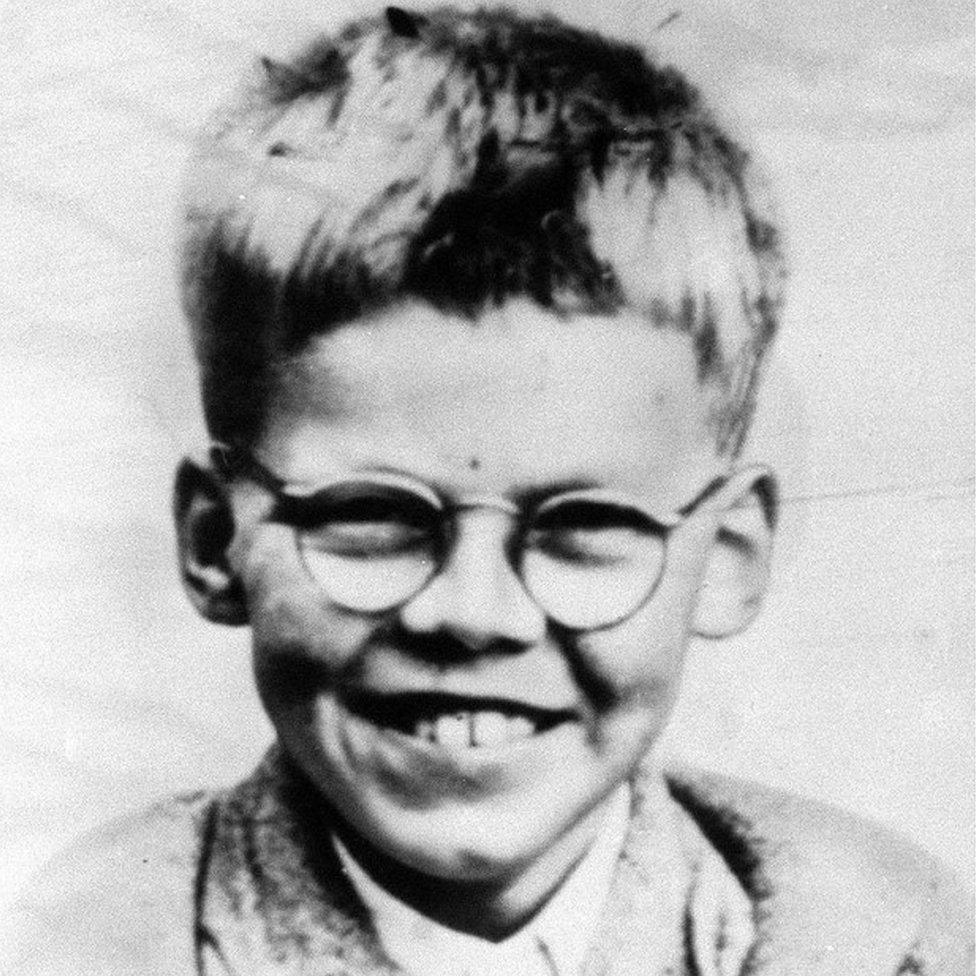
The body of Keith Bennett has never been found, despite appeals to Brady for help
Four days later, another search of Brady's flat turned up two left luggage tickets for Manchester Central Station, leading police to a pair of hidden suitcases.
Inside, they found nude photographs of the girl, along with tape recordings of her final tortured moments, pleading for her life as she was sexually abused.
A series of seemingly innocent snapshots depicted portions of Saddleworth Moor, and detectives paid another visit to the desolate region on 21 October, unearthing the body of John Kilbride.
Life terms
Police announced they were opening their files on eight people who had disappeared over the previous four years, but no new charges had been added by the time the couple went on trial.
Jurors were stunned by the Downey tape, and by Brady's bland description of the recording as "unusual".
On 6 May 1966, both defendants were convicted of killing Edward Evans and Leslie Ann Downey. Brady was also found guilty of murdering John Kilbride, while Hindley was convicted as an accessory after the fact.
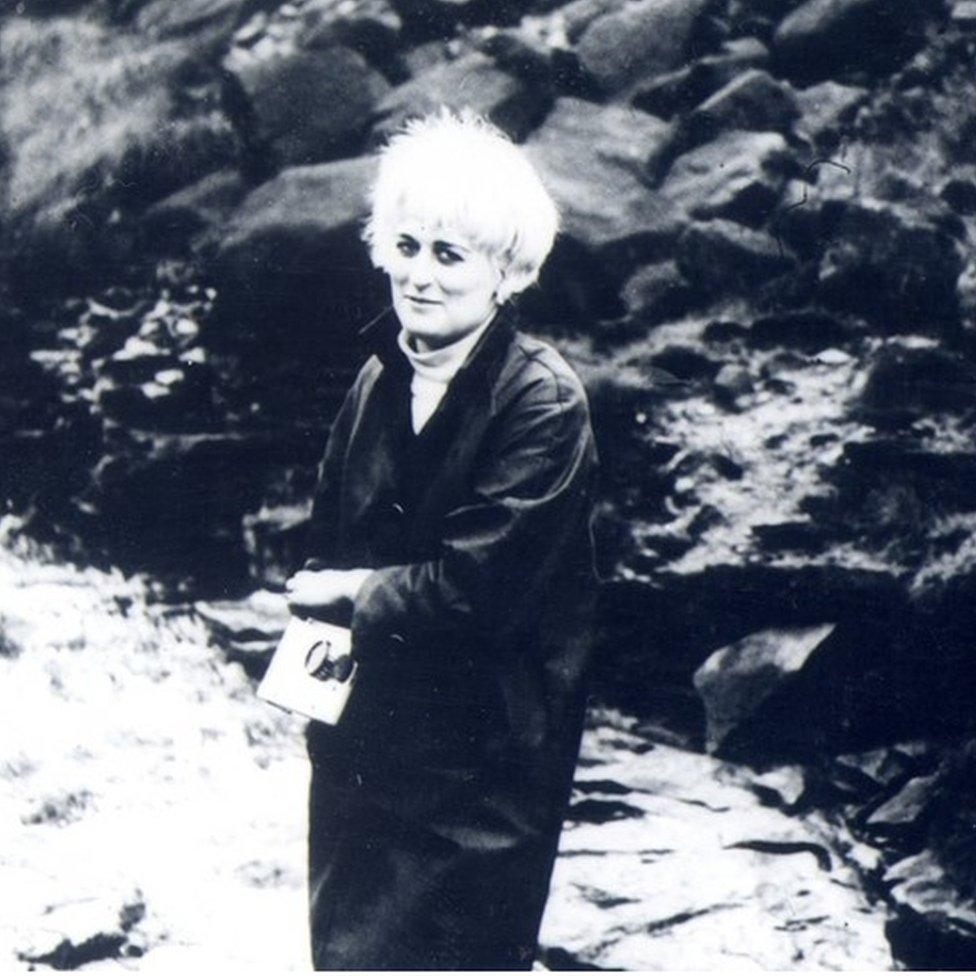
Brady photographed Myra Hindley on Saddleworth Moor
Brady was sentenced to concurrent life terms on each count, while Hindley received two life terms plus seven years in the Kilbride case.
Nineteen years later, in November 1985, Brady was transferred from prison to a maximum-security hospital after being diagnosed a psychopath.
There, in an interview with newspaper reporters, he confessed to the murders of Pauline Reade and Keith Bennett.
Another year passed before searchers returned to the moors, with Hindley joining them for an abortive outing in December 1986, and Brady doing the same in 1987.
Parole
The remains of Pauline Reade were uncovered on 30 June 1987, nearly a quarter of a century after her disappearance.
It took pathologists a month to decide she had been sexually assaulted, her throat slashed from behind.
In August 1987, Brady posted a letter to the BBC containing sketchy information on five "new" murders he said he had committed.
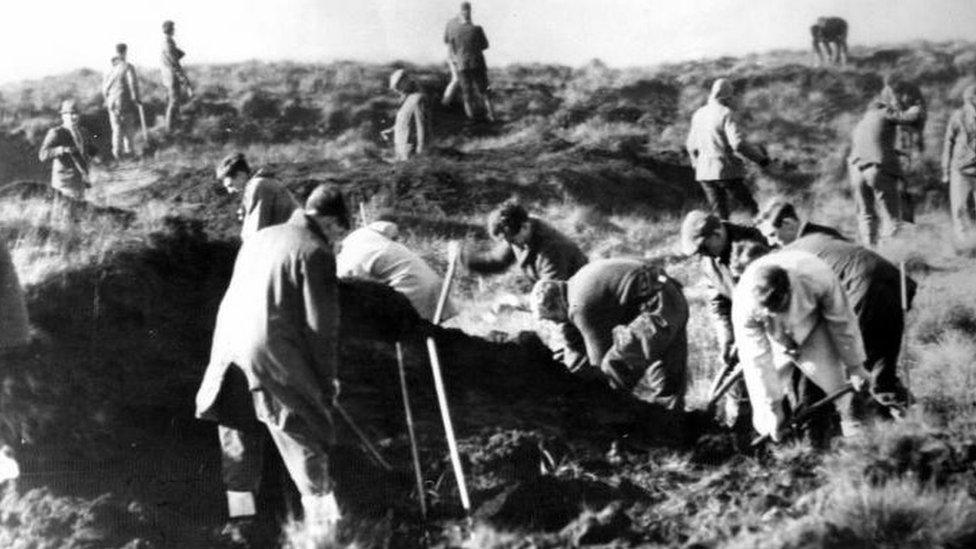
Lesley Anne Downey was the first victim whose body was found
Five months later the Director of Public Prosecutions announced that, in the public interest, there would be no prosecution of the murders of Pauline Reade and Keith Bennett.
Brady accepted from the start that he would never be released, unlike Hindley who, in trying to secure parole, claimed Brady had forced her into killing by abusing and torturing her into submission.
But Brady reacted to her allegation by claiming: "For 20 years I continued to ratify the cover I had given her at the trial whilst, in contrast, she systematically began to fabricate upon it to my detriment."
Myra Hindley died in 2002. Ian Brady, who had been on hunger strike, and force-fed daily, declared he would rather die quickly than rot slowly in jail.
Christian burial
His attempts to force the authorities to let him starve himself to death failed. In March 2000 a judge described his hunger strike as part of his "obsessive need to exercise control".
A year later Brady's book - The Gates of Janus, an analysis of serial murders - was released by an American firm, Feral House. The decision to publish caused an outcry in the British press and resulted in hate mail being sent to the publisher, Adam Parfrey.
In 2012 Brady asked to be returned to prison so he could starve himself to death without the force-feeding permitted in mental institutions.
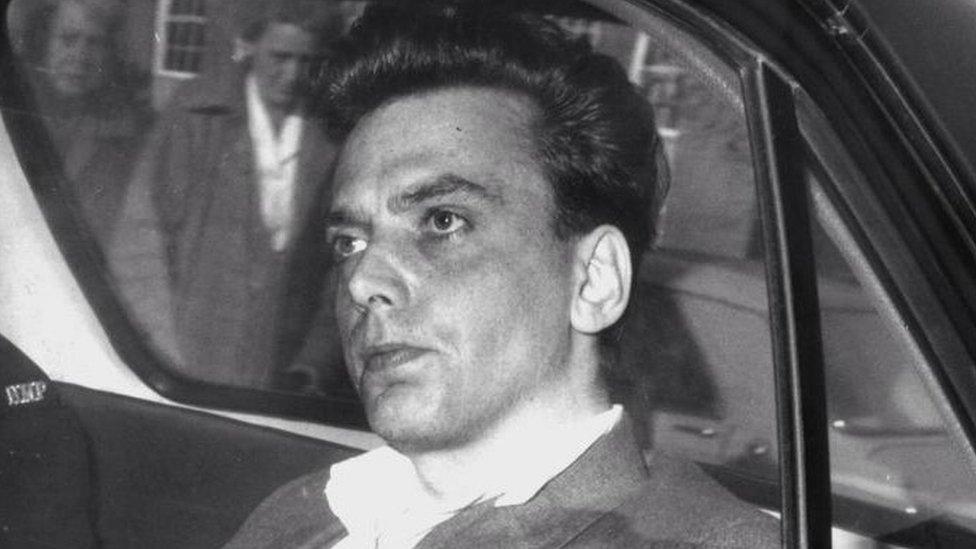
Brady was arrested after the killing of Edward Evans
A tribunal ruled it was appropriate that he continue to be treated in a mental hospital.
In the same year Keith Bennett's mother, Winnie Johnson, who had fought for four decades to have the two killers prosecuted for her son's murder, died of cancer. Her overriding wish, to find Keith's remains and give him a Christian burial, was never fulfilled.
John Kilbride's brother Danny, who had campaigned against any suggestion the two should ever be released, died a year earlier.
Chris Cowley, a forensic psychologist who had spent six years in dialogues with Brady, had earlier concluded he was a sociopath with few redeeming features, showing no compassion or feeling for anyone other than himself.
"His only thought for the victims or their families is what he can get out of it," Dr Cowley told the Sunday Telegraph in 2011. "He would kill again without a thought for anyone who gets in his way."